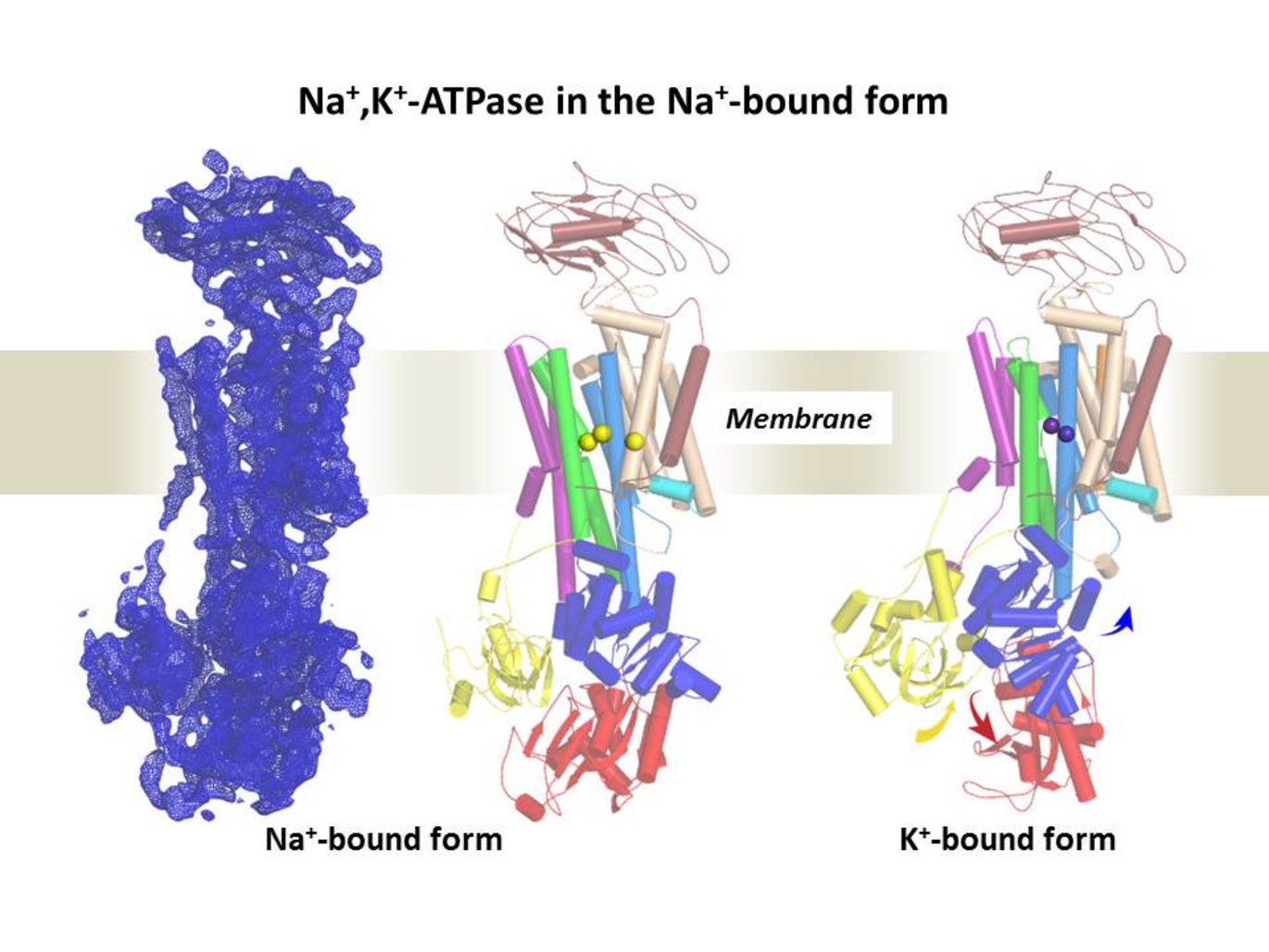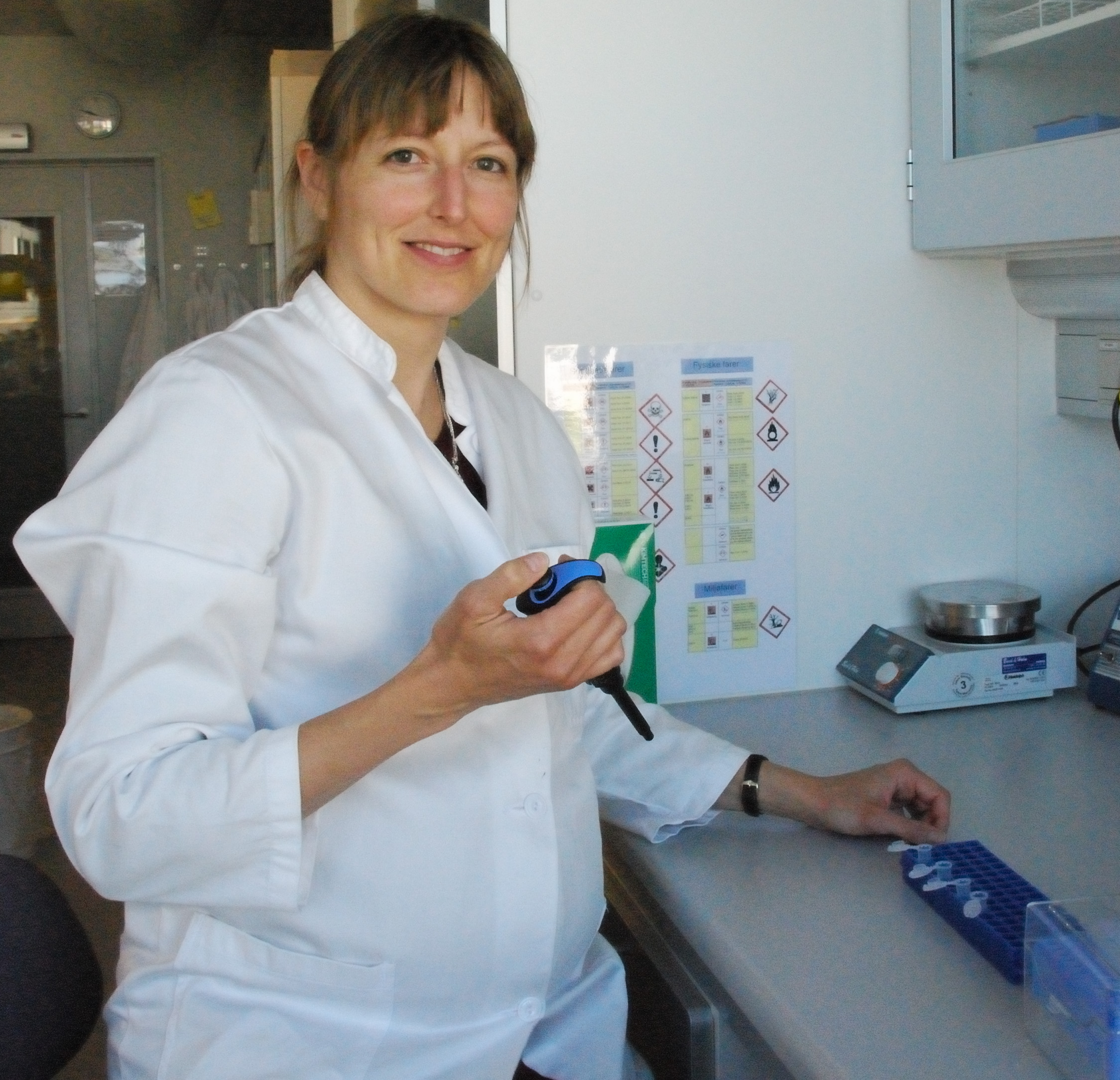Crucial new insight into the secrets of Nobel Prize-winning pump
Jens Chr. Skou was awarded the Nobel Prize for his discovery of the sodium-potassium pump. Now, a team of researchers from Aarhus has completed the description of its structure. A result which is of vital importance for our understanding of the body's functions and essential for our understanding of illness and for the development of new medicines.




The story of the sodium-potassium pump has strong ties to Aarhus. In 1997, he received the Nobel Prize in Chemistry for his discovery, and over the years, research on the pump has remained a strong focus area at the university. In 2007, the joint efforts of various research teams at Aarhus University led to the description of the structure of the potassium-bound state of the pump - now, Aarhus researchers have also described the other state of the pump; the sodium-bound state. The results were recently published in the journal Science.
The pump is pivotal to the body’s function
The sodium-potassium pump is a vital enzyme found in all human cells which constantly maintains an optimal ion balance. This uses up a great deal of energy – about a fourth of the body’s energy, the so-called ATP, is used to keep the pump going; in the brain the share is nearly 70%.
The sodium-potassium pump works by pumping two potassium ions into the cell and pumping out three sodium ions using the energy from an ATP molecule. This leads to a build-up of considerable differences in the concentration of the ions on the outside and inside of the cell. Differences which are essential for the communication and transport in and out of the cell of nutrients and other compounds - and for the regulation of the cell’s pH and volume. If the pump does not function properly in brain cells, the result is severe neurological conditions such as migraine with aura, muscle spasms or unilateral paralysis (hemiplegia).
Knowledge of the pump is therefore crucial for our understanding of the matter and energy balance and of the disease mechanisms which come into play when the pump does not function properly. This knowledge is also important in order to develop new medicines targeting the pump.
Young interdisciplinary researchers generate knowledge
The path leading to the description of the sodium-bound state of the pump led through interdisciplinary research cooperation at Aarhus University. Sodium ions are minute and hard to detect unambiguously with a single method. But by combining a range of different methods, it was possible to piece together a complete description of the sodium-bound state of the pump.
“The description is a decisive step towards understanding the function of the pump. We now know where and how to focus future studies,” says Professor Poul Nissen, one of the researchers behind the study who also spearheaded the structure description of the potassium-bound state. “But this study also points the way forward in other ways: Young researchers have been the key players in this work and have developed and made available new knowledge and methods in basic biomedical research. The discovery of the pump’s secrets is not only exciting research work but also motivates the development and recruitment of new research talents to the benefit of universities and corporations alike,” says Poul Nissen.
Coming full circle
By describing both sides of the sodium-potassium pump, the researchers have made an important advance towards understanding the pump discovered by Jens Christian Skou back in 1957.We now understand how the pump works as a 'molecular nanomachine’, and we can observe how it is affected by mutations which cause it to malfunction. The researchers now aim to establish a more detailed description of the pump and to gain more in-depth knowledge about its function and impact on health and disease.
Title of article: Crystal structure of Na+,K+-ATPase in the Na+-bound state.
Authors: Maria Nyblom, Hanne Poulsen, Pontus Gourdon, Linda Reinhard, Magnus Andersson, Erik Lindahl, Natalya Fedosova and Poul Nissen
Aarhus researchers behind the study:
Maria Nyblom, Pontus Gourdon and Hanne Poulsen co-first authored the article. Nyblom crystallised the pump with sodium ions, and established and analysed its structure in collaboration with Gourdon and Reinhard. Poulsen performed electro-physiological measurements and tested ion localisation models, and Fedosova was responsible for the biochemical studies of the sodium-bound state. Nissen coordinated the study. The authors have produced crystals of sodium-potassium pump preparations received from Janne Petersen and Bente Vilsen.
The result is a collaboration between the Department of Molecular Biology and Genetics and the Department of Biomedicine coordinated by the basic research centre PUMPkin and in association with the Danish EMBL centre DANDRITE.
Funding: The study was funded by the Danish National Research Foundation and also received grants from The European Research Council (ERC), the Danish Council for Independent Research, the Lundbeck Foundation and the Carlsberg Foundation.
Video
The video clip shows morphing between the known crystal structures of the sodium-potassium pump. Initially, three sodium ions from the inside of the cell are bound to the pump which then closes. This is mechanism described in the Science article. Next, the ions are released on the other side of the membrane. Two potassium ions then pop in and the pump closes once again. Finally, the potassium ions are released into the cell, but the details of this step remain unknown at present. The energy needed for the process is produced by stepwise splitting of the energy-rich ATP molecule. (Video: Jesper Lykkegaard Karlsen)
Further information:
Professor Poul Nissen
Department of Molecular Biology and Genetics
Aarhus University, Denmark
Tel: + 45 2899 2295. Mail: pn@mb.au.dk
